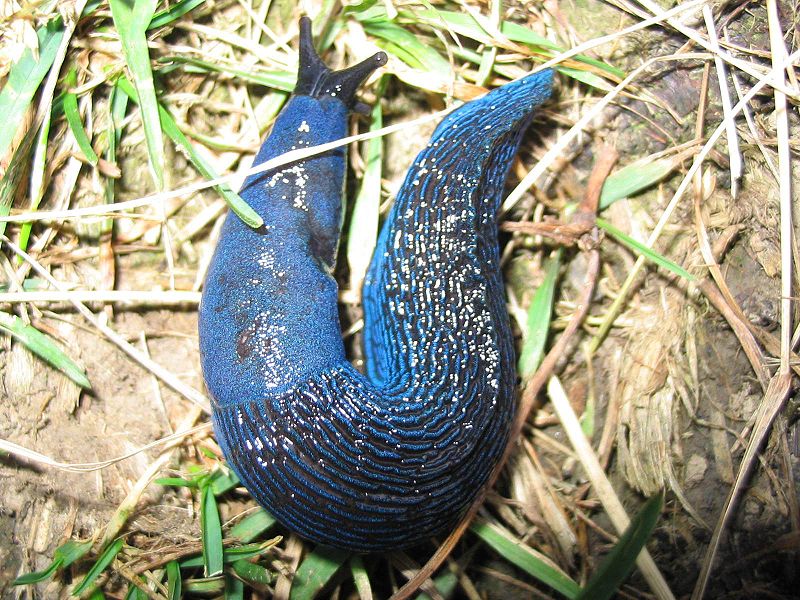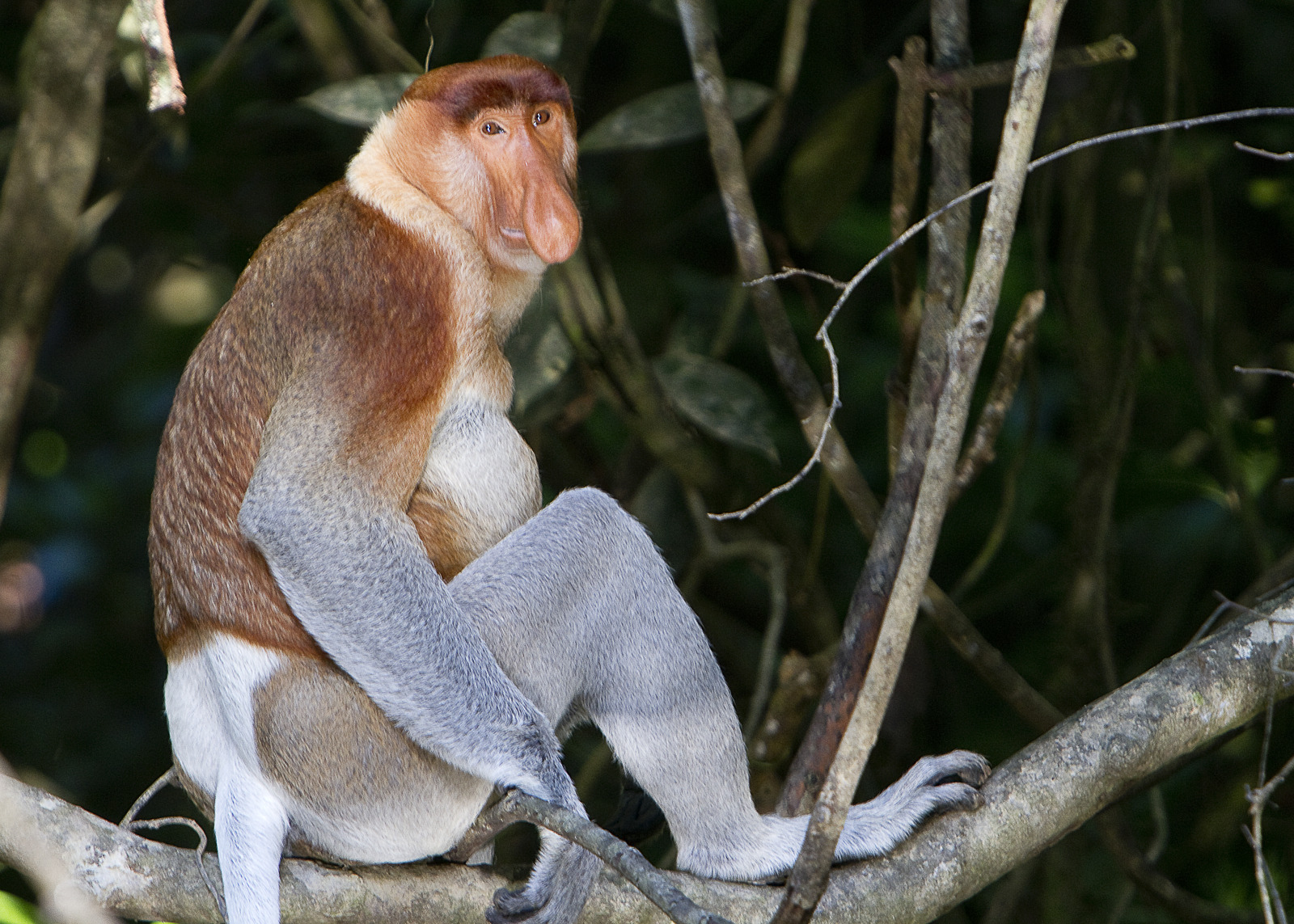The Ugly Animal Preservation Society
Interview with
The IUCN, the International Union for Conservation of Nature, currently has over 4,000 species listed as Critically Endangered on its Red list, a comprehensive list of threatened species.
This includes high profile animals like the Mountain Gorilla and lots of different species of leopard, but also snails, worms, spiders, and other less graceful animals. Publicity and fundraising campaigns often focus on the cute, charismatic or cuddly animals, possibly leaving nature's less aesthetically pleasing species behind.
Biologist Simon Watt is now taking a stand for these underdogs and has created the Ugly Animal Preservation Society.
Helen - Simon, thanks for joining us. What inspired you in the first place to be the voice for ugly animals?
Simon - It's been one of those ideas that's been kicking around in my brain for a couple of years. I think the real thing that was the crux was, as I was doing a talk at a book festival, we were advertising books and selling things for some biology books that I was writing for, and I mentioned how myopic we are in terms of our conservation efforts in the species that we view and deem as being worthwhile. I was championing to the crowd all these ugly things which I enjoy and I find fascinating and do matter just as much biologically. And one of the audience just said, "You should do something about that."
Helen - So why are ugly animals important? Why should we be conserving them?
Simon - We can argue that to some extent, at least all of the living things, all of the creatures in the planet have got some kind of value, and we can say that mainly because there's a web of interconnectedness in ecology. I remember at school, whenever we're studying biology, I used to find ecology very boring actually because it seems that the answer to every single question is just everything is connected. So, I think we have to think about all the ugly things because they do have a place.
Helen - Absolutely and are they being failed by conservation efforts at the moment, these less immediately charismatic species?
 Simon - That's hard to tell. I think the thing is, we have to get away from this idea of a species-based approach to conservation and the good news is that we, by and large, are. Things like the panda and whatnot do matter as icons. But what we really need to focus on is the habitat. If we save where these species live, generally, everything else gets saved besides. So the panda actually is a good example for that because in conserving the panda, we're also conserving the territory of the red panda and of golden monkeys, and all sorts of other things that live in the bamboo forests there.
Simon - That's hard to tell. I think the thing is, we have to get away from this idea of a species-based approach to conservation and the good news is that we, by and large, are. Things like the panda and whatnot do matter as icons. But what we really need to focus on is the habitat. If we save where these species live, generally, everything else gets saved besides. So the panda actually is a good example for that because in conserving the panda, we're also conserving the territory of the red panda and of golden monkeys, and all sorts of other things that live in the bamboo forests there.
Helen - So that's an example of a species that's an umbrella for conserving wide areas of habitat like you say. Are we going to be able to use ugly species as ambassadors for conservation? How are we going to get people excited about conserving things that aren't giant pandas, and leopards, and so on?
Simon - I think we really can because they might not be pretty, but they're still damn interesting. There are some amazing creatures out there. One of the ones that I frequently champion, just because I think it's amazing, is this thing called the Canadian blue-grey taildropper slug. It's great because it's a "smurf" blue which is interesting in its own right, but if you scare it, its bum drops off. I guess it's a survival mechanism.
Helen - Sorry, can I just check - a blue slug whose bum drops off it gets scared, is that right?
Simon - That's spot on. Basically, if a predator sneaks up on it, it leaves a meal behind, so the predator will stop and eat the tail while it legs it.. Well, legs it as fast as a slug can.
Helen - And its bum grows back I hope?
Simon - Yes, it's like a salamander, which can regrow various parts of its body.
Helen - That's great. I have seen little geckos drop their tails when they get caught by cats in the tropics, it's quite odd because it slops off and then wriggles around for a bit, so I can see how that would work. What other favourite ugly species are you championing the conservation of? What else should we be caring about?
 Simon - A good time to ask because the Ugly Animal Preservation Society, of which I'm president for life, we had our first - we call it our general meeting, but was basically an excuse to get lots of comedians that I know to get together and each one was going to champion a different ugly species. At the end, the audience voted as to what was going to be the representative, our mascot, our equivalent of the panda - an ugly panda, if you will. And the audience voted for the proboscis monkey which has been championed by Ellie Taylor.
Simon - A good time to ask because the Ugly Animal Preservation Society, of which I'm president for life, we had our first - we call it our general meeting, but was basically an excuse to get lots of comedians that I know to get together and each one was going to champion a different ugly species. At the end, the audience voted as to what was going to be the representative, our mascot, our equivalent of the panda - an ugly panda, if you will. And the audience voted for the proboscis monkey which has been championed by Ellie Taylor.
Helen - I would say the proboscis monkey is not that ugly, is it?
Ben - I think they're wonderful creatures. I've always nicknamed them the Jim Henson monkey because they look an awful lot like a monkey that was designed in Jim Henson's creature workshop. It doesn't really look real. It looks a little bit prosthetic, that nose.
Simon - If you think the nose is cute enough, their digestive system should really put you off. They are basically massively flatulent - their stomach ends up being bloated because of their diets. They're just peculiar-looking. If nothing else, you can't see their mouth, so we can't lip read.
Helen - I assume that these ugly species are everywhere. It's not just the case that we have to go off to a tropical rainforest to find these things. Are they also in our backyard even and easier places to find?
Simon - Well, I think ugly is in the eye of the beholder, but definitely, the vast majority of things that are out there are not cute and cuddly. We are so obsessed with mammals and birds. We basically don't care about things if they're not cute and fluffy, if they don't have the kind of face that we can recognise. The vast majority of stuff out there just doesn't fit our kind of criteria.
Helen - Absolutely. I'm always trying to champion the fish because they don't have feathers or fur, but what can we start doing to help protect these ugly species? What do we need to do?
Simon - Actively, habitat is the way forward. We have to accept that according to recent estimates, there might be say, 8.3 million species of plants and animals and things out there. And the only real way of conserving them is to look after where they live, to accept these webs of interconnectedness, that if you affect one species, you will affect the other. And perhaps the best example we can think of like this at the moment is the problems we've been having with bees. We can see how whenever the bee populations crash, there's trouble with pollinating certain plants and things like that.
Helen - And presumably, you've got the connections back from these ugly species to the ones we think are more beautiful as well. So, if we want to preserve the panda, we need to think about these ugly ones too. All of those connections are important. We asked our listeners if they had any examples of ugly things they would like to conserve. Jo Kelly suggested the Blob fish. I don't know if any of you have seen this extraordinary photograph of a deep sea fish. I mean, the poor thing has been yanked out of its habitat and brought many hundreds if not, thousands of meters up to the surface so it's looking a bit sad. I would definitely champion that one.
Simon - Yes, it does look emotional, doesn't it?
Helen - It really does. They're quite sad.
Ben - It has been described as the most miserable-looking species on Earth. Now I think the blob fish may have been one of the ones that was promoted at your evening last week. What was said about it? Why should we conserve the blob fish?
Simon - It wasn't promoted directly in our case. I actually did a pre-record and a little bit of animation and it ended up introducing some of our acts.
Ben - So the blob fish himself was being the compare for the evening?
Simon - A little bit. He introduced me.
Ben - Wonderful! CBAxel on Twitter has already said that the ugly animal he would preserve is himself and we asked why, and he said, "Because it's me." Now obviously, that's not a very positive way to think about yourself, but I guess it could be argued that to most of the animals species, humans aren't all that attractive anyway.










Comments
Add a comment